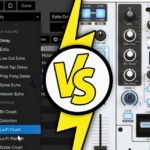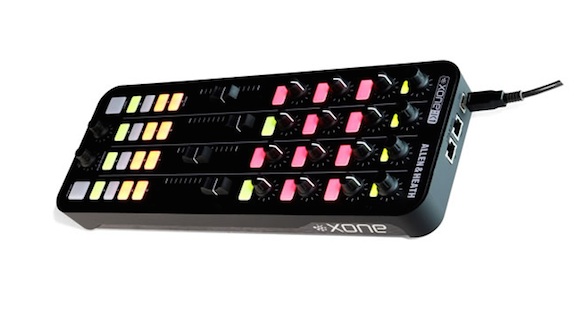
Video Review
Known principally through the years for its professional mixing equipment, Allen & Heath – via its Xone sub-brand – has released a number of highly regarded DJ products over the last decade, too. It scored a near-industry standard with the Xone:92 club mixer, and has recently also added two highly regarded digital mixers, the Xone:DB4 and Xone:DB2, both of which incorporate many of the digital effects the company has pioneered in more expensive products, and which are ideal mixers for use by digital DJs thanks to their built-in audio interfaces.
A little lower down the product range come more affordable digital DJ-friendly products such as the Xone:23 and Xone:23C DJ mixer, the latter with a built-in interface, as well as the Xone:K2 and the new Xone:K1 modular DJ controllers. It’s the Xone:K1 we’re looking at here today, and again, the only big difference between this and the Xone:K2 is that the Xone:K2 has an audio interface. This actually makes the Xone:K1 the perfect partner for the recently reviewed Xone:23C mixer over its older stablemate, which as you’ll see later is my preferred minimal modular digital system out among this range of products.
(If you’re new to all of this, a quick primer: Any digital DJ set-up typically needs an audio interface – to allow two high-quality independent stereo outputs, ie the minimum required for DJing – and some kind of control surface, to stop you needing to use the trackpad/keyboard to control the software. Hence if you have an audio interface in your mixer, you don’t need one anywhere else in your set-up, ie in any Midi control surface you choose to use alongside the mixer.)
The modular advantage
So why go “modular” at all? Well, if you’re coming to digital from analogue (CDJs/vinyl), you may still have that gear and be trying to incorporate it into your set-up, in which case having a “real” mixer and a cut-down control surface for your DJ software may well make sense. If you’re planning to develop your DJ set-up over time, maybe to incorporate production gear, or add decks or CDJs, again having a “real” mixer at the heart of it makes more sense, flexibility-wise, with a slimline controller to cover essential digital tasks. Or if you’re a mobile DJ wanting something as simple as a decent microphone channel to talk over your digital DJ sets, a hardware mixer at the heart of things will again give you this more reliably than a typical DJ controller might.
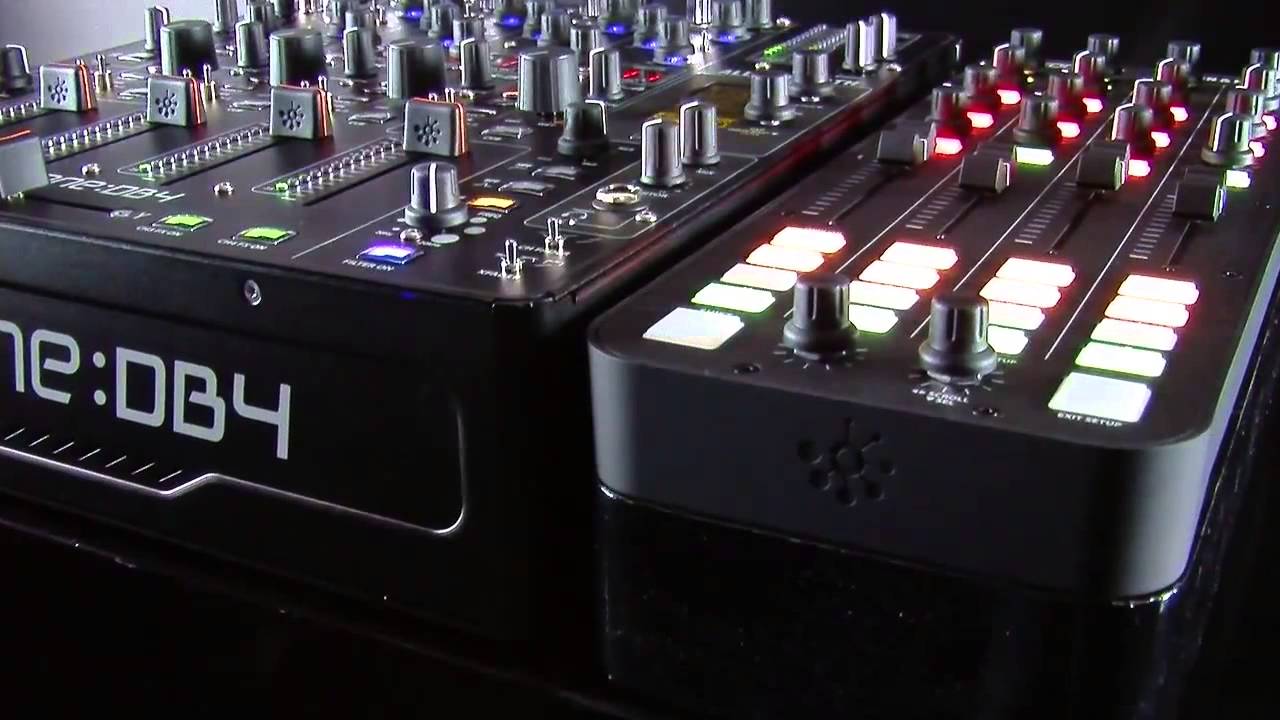
Or finally (and most interestingly, I think) you may just want a minimal but pro set-up that has the parts you think are important without those you don’t have any need for; if you want to control certain aspects of your DJ software but aren’t interested in others, a small, powerful modular controller such as the Xone:K1 may be all you need to do so (principally, many DJs who play EDM styles, techno, tech-house and so on see absolutely no need to have a pair of jogwheels around with them as part of their gear; with a modular system, that becomes easy to achieve).
Whatever the reason, many DJs prefer the modular approach. If so in your case, the Xone:K1 may be part of the solution gear for you. So let’s take a closer look…
First impressions & setting up
The Allen & Heath Xone:K1 comes with a small printed QuickStart Guide, a USB cable, and an X:Link cable for linking to other Allen & Heath equipment to save using multiple USBs to your computer. The unit itself is black and sober looking, light but not too light, giving the impression of quality but with an eye to being portable, weight-wise. It’s only a couple of inches thick, with four rubber feet, a metal top-plate, rubberised plastic base and rubber/brushed metal sides. It has rounded corners and a properly bolted down faceplate. Likewise, all the knobs have steel nuts bolting them to the faceplate, so to reduce the stress on the circuit board when using them. The faders are typical Allen & Heath smooth-feeling, and all knobs and back-lit buttons are pleasingly rubberised. It’s a quality item.
To set it up, on a Mac you just plug it in, no drivers required; on a Windows PC, the same applies, but if you want to use multiple units together, you do need to download from the Allen & Heath website the requisite drivers and install them.
Another word about set-up, here, and an important one; this is a “universal” unit, designed to use with all DJ software that can work with external Midi controllers, and even with software such as lighting if you so wish. That, of course, means there’s a learning curve because you need to work out how to “map” the unit to the software you wish to use it with. Doing so is not hard, but it does take time and effort. The setup mode lets you choose the Midi channel the unit works on (this is important to save clashes with other gear on the same channel, should you have some more Midi hardware).
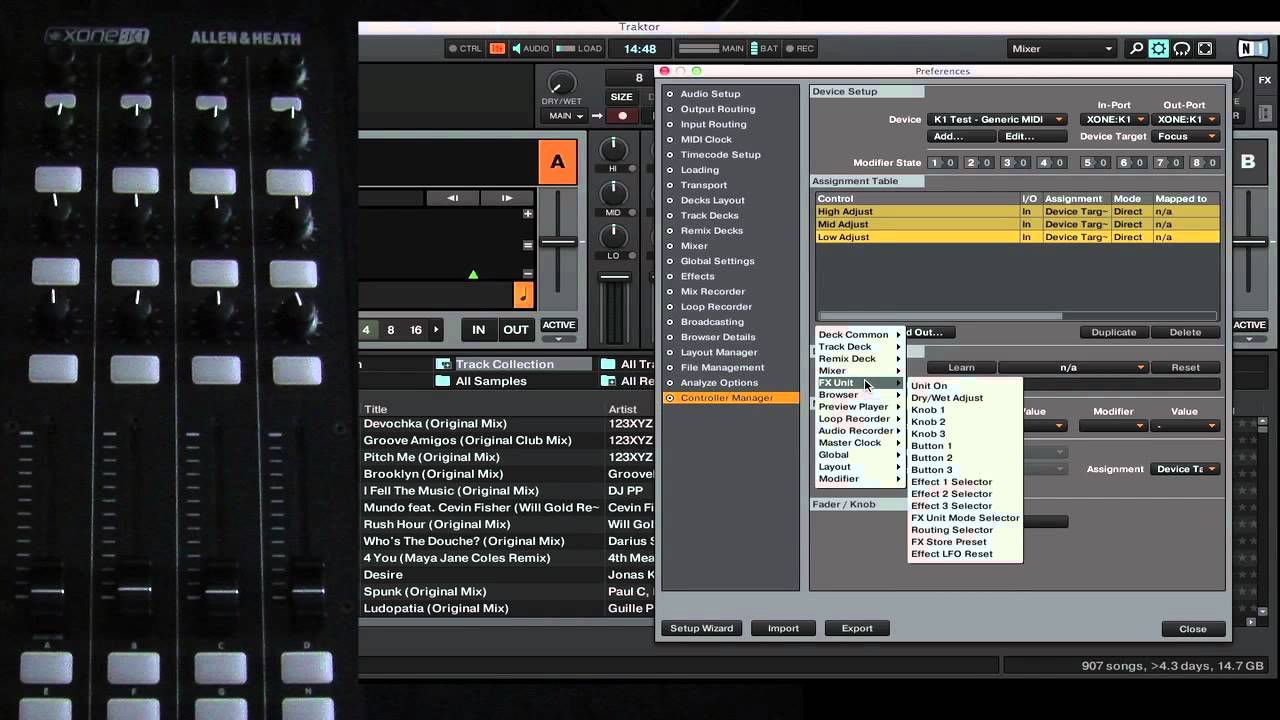
Most DJ software has reasonably simple “learn” modes where you select the thing you want to controller to mimic and then press the button or turn the knob or slide the fader to lock the two together, but certainly for things like tactile LED feedback (where your action sends “back” to the unit an instruction to change the state of a light, for instance) you’re gonna need to roll your sleeves up! For Traktor, I heartily recommend The Trakor Bible if you’re interested in this stuff.
Luckily for the uninitiated, there are sample mapping files available on the Allen & Heath website to use with Traktor, Ableton and MixVibes Cross (there’s an LE version of that software in the box with the Allen & Heath Xone:23C. the mixer we think this unit would ideally be paired with, which is probably why they include that particular mapping) as well as a mapping for Ableton, for those of you who want to use it in production or for Ableton DJing. Although Allen & Heath doesn’t mention Serato in its blurb, we see no reason why this couldn’t be programmed to be used with Serato, which as of 1.7 has a Midi mapping editor too.
In use
I’m going to refer you to our Allen & Heath Xone:K2 review here because all the same words apply. The difference in use here is that as this unit has no audio interface built in, you’re going to use it in a system where there’s already an audio interface somewhere, as outlined in the intro. the absolute natural piece of gear to pair it with is the excellent Allen & Heath Xone:23C. You can plug the two pieces of kit together with the X-Link cable, then only one USB needs to plug into your computer, freeing up a valuable port, and now you’ve got a DJ system comprising two professional surfaces, one for hardware mixing of your audio, and one for controlling whatever the hell you like!
You may want to use it as a loops/FX etc DVS controller alongside your decks; you may want to use it to control Traktor’s Remix Decks instead of the Traktor Kontrol F1 (again, there’s a mapping on the Allen & Heath site, and in this unit, you get the same 4×4 grid with four layers, but many more controls besides); you may you may want to program it to give you control over all four decks of Traktor and feed them into a single channel on your DJ mixer to use alongside a traditional decks and/or CDJs set-up… the point is, it’s flexible, and with 52 controls, 6 endless rotaries, 12 pots, 4 faders and 30 switches with RGB backlighting, you’re limited only by your own ingenuity and mapping skill.
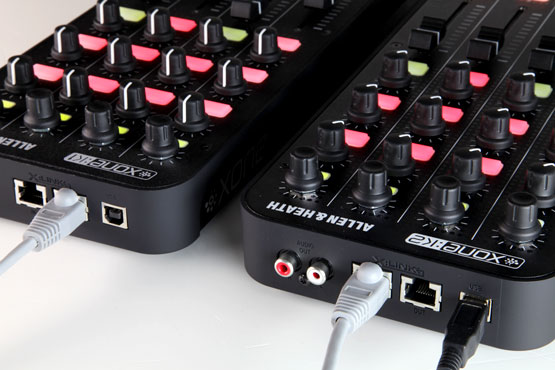
(Note that if you are using it as a DVS controller, you’ll probably be using it with the supplied audio interface and a conventional DJ mixer – such as the Allen & Heath Xone:23 – rather than the Xone:23C I’ve been talking about, because Serato and Traktor DVS both require the use of their own licensed audio interfaces; however, note that other systems like MixVibes DVS don’t.)
Just like its soundcard-laden brother the Xone:K2, the Xone:K1 is a joy to use as far as the feel of the controls goes, something that’s only improved upon if you add the hard carry case, because that case doubles up as a stand to make the unit the same height as pro DJ mixer; perfect for tucking besides the house gear when DJing in clubs.
Conclusion
Frankly, this isn’t for beginners. While there are “out of the box” mappings, you’ll still – as a beginner – probably be scratching your head reading this, thinking: “Why would I need something like that?” And the truth is you likely don’t; you’re still best off with a decent, small controller to learn your trade on.
But once you’ve worked out what you really want and the direction you’d definitely like to take in your DJing, you may well start thinking the “what if?” questions. What if I could ditch the jogwheels I never touch? What if I had a real mixer so I didn’t have to speak on crappy mic inputs on controllers that always sound rubbish? What if I could plug CDJs or my old vinyl decks into my digital system too? What if my set-up could break down and fit into a small bag easily for travel? What if I had knobs to do that, buttons to do this, faders to do the other?

At that stage, you’re also likely to be thinking about remapping features. (Trust me, it isn’t so hard. Even with Traktor, which is the hardest of all the big DJ software apps to map, you can do it easily enough.) And it’s precisely at this point in a DJ’s evolution that controllers like the Xone:K1 become highly desirable.
With its “blank page” decal, you can truly map to its surface what’s in your head. Are you a DJ/producer looking for an Ableton laptop system with four performance channels to plug into a conventional DJ mixer? It’ll do that. Old analogue guy looking for digital DJ control to add to over a basic DVS system? No problem. A controllerist wanting to use Traktor Remix Decks with extra functions that can’t be squeezed onto the more limited “official” Kontrol F1 surface? You guessed it, it can handle that. It’s for these types of situation that the Xone:K1 shines.
This or the Xone:K2?
The choice between this and the Xone:K2 really depends on where in your system the audio interface is. If you’ve not yet got other components and are just planning a system, though, I’d personally go for the K1 and incorporate my audio interface elsewhere, such as in a mixer like the Xone:23C (or the DB2 or DB4, of course). I always thought the Xone:K2 should have had both sets of audio outputs on the back, as it’s clumsy wiring its two channels into a mixer with one on the front. (Also, if you’re planning a DVS system using Traktor or Serato, again you’ll need a licensed audio interface somewhere in the set-up, again pointing towards the Xone:K1 over the K2.)
For me, the natural place for an audio interface in a modular DJ set-up, especially a minimal one eschewing jogwheels / platters of any type, is definitely in the mixer. Paired with its natural bedfellow, the Xone:23C mixer, the Xone:K1 is a perfect fit. X-Linked in, you’ve got a simple, powerful, flexible and high-quality DJ system. Add another one, and again the X-Link ensures you’re still only using one USB on your computer, but the possibilities become mind-bogglingly endless. It’s customisable, powerful digital DJing at its best.
Just make sure it is definitely the direction you want to go in before you buy though, not least because the K1 feels like it’ll last forever, so you won’t be needing to replace it for years should you decide you’ve made the wrong choice…
Do you have a modular DJ system, or are you looking to build one? Can you see the Xone:K1 fitting in alongside your other components? Please share your thoughts in the comments.







